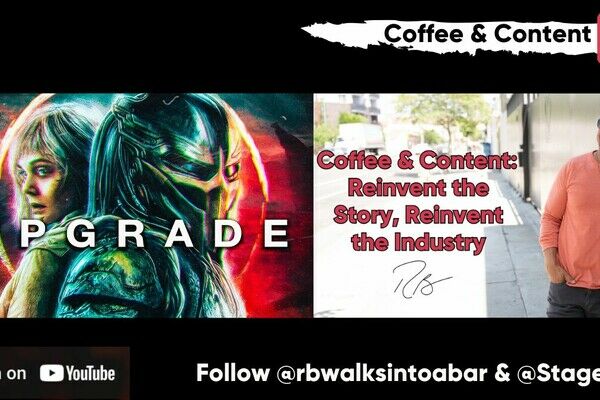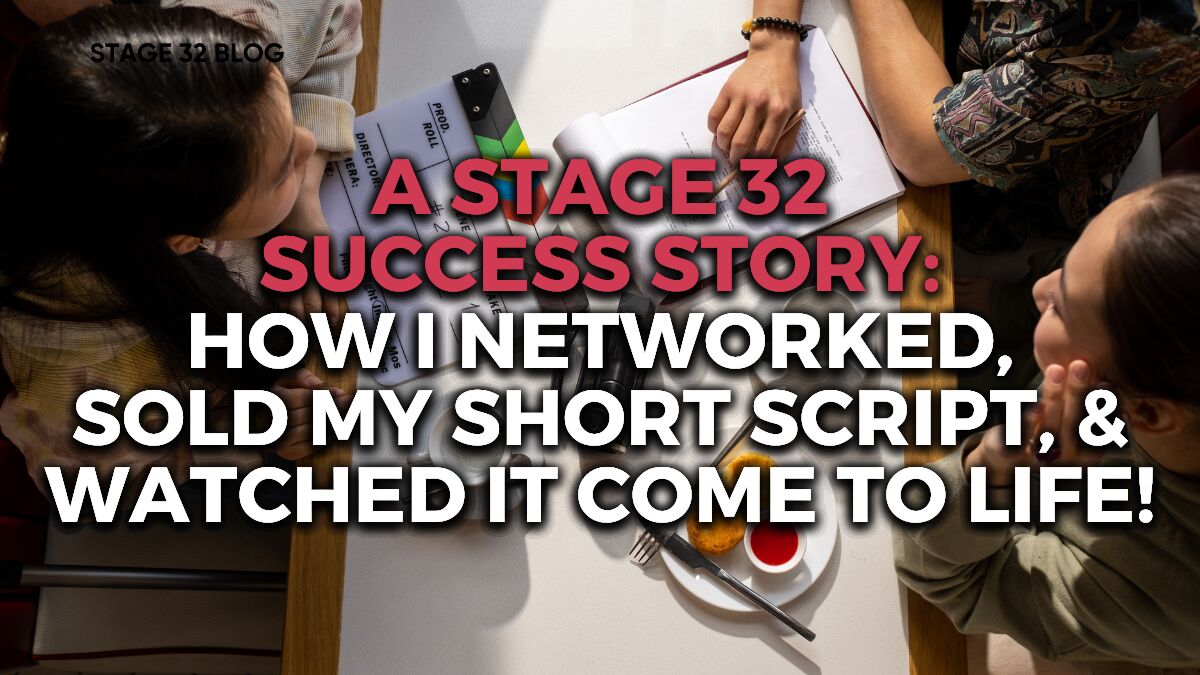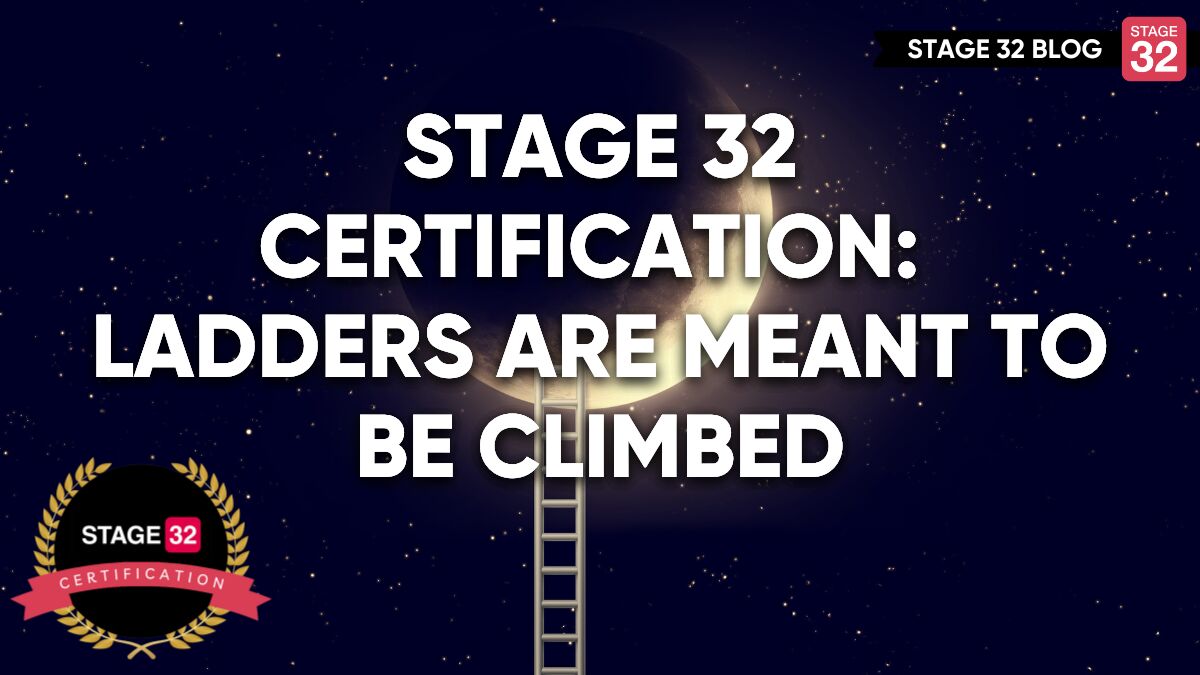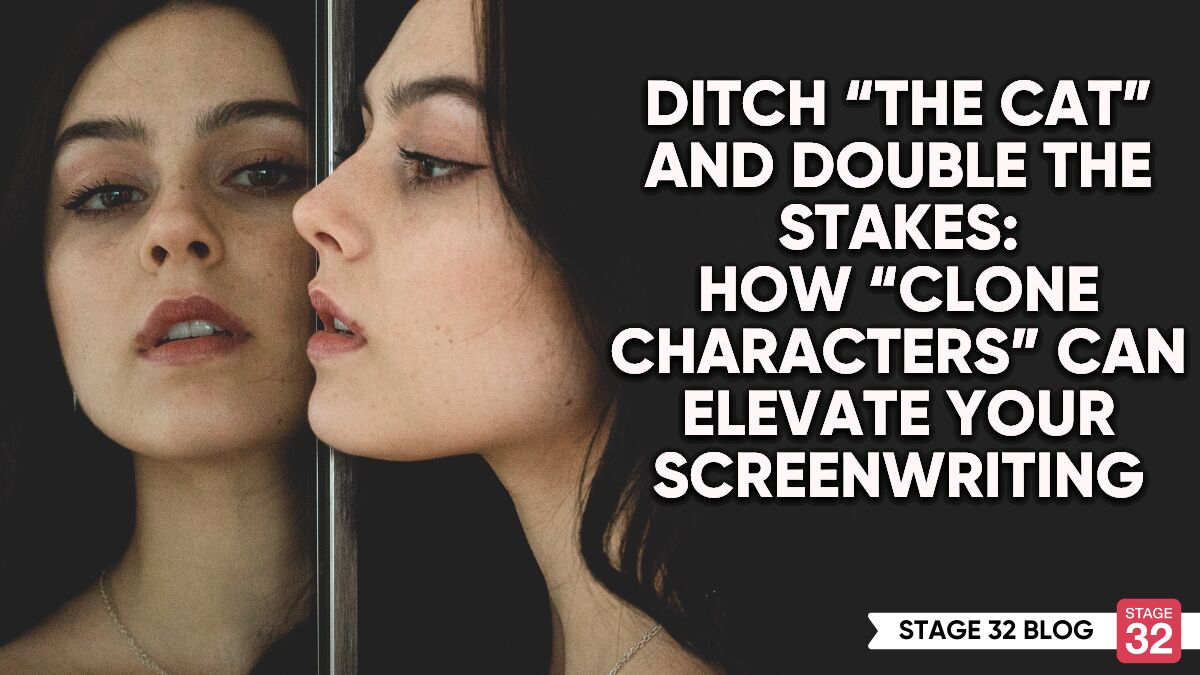Ditch “The Cat” and Double the Stakes: How “Clone Characters” Can Elevate Your Screenwriting
“That’s me in ten years if something doesn’t change.”
These words aren’t spoken aloud, but written into John’s features when he finally meets his idol, Chazz, a robe-wearing, Hefner-like man-child still living with his mom (“Ma! The meatloaf!”). In Wedding Crashers, Chazz (Will Ferrell) serves as a clone character: a cautionary example of who John (Owen Wilson) could become if he stays on his current trajectory.
According to writer/director Brian McDonald, a “clone character” is a storytelling device used when one character represents another, illuminating some aspect of their self or journey. These characters act as a mirror or shadow image, reflecting what the protagonist could become based on the choices they make.
In Elf, Walter Hobbs is on par with Mr. Greenway, a raging workaholic whose only care is the bottom line. The audience cheers when Walter goes head-to-head with Greenway, choosing family over career, because in his rejection of Mr. Greenway’s demands, his future turns in a more positive direction. Similarly, if Buddy lets his disappointment and cynicism take over in those “dark night of the soul” moments, he’s at risk of becoming someone like Walter. On the positive end, Jovie sees another way to be an “elf” in Buddy’s example. She doesn’t have to just “get through” the holidays; she can embrace them.
In Mean Girls, if Cady fully entrenches herself in the “Plastics” lifestyle, she will end up like Regina George.
If he gives in to the Dark Side, Luke Skywalker (Star Wars) could become like Darth Vader.
By the midpoint, Andy Sachs (The Devil Wears Prada) is on track to become a Miranda Priestly if she doesn’t take a step back and reflect on her core values.
In Toy Story 2, if Woody decides to give up being a toy, he could end up like Stinky Pete, and in Toy Story 3, Lotso is an example of what happens when an abandoned toy lets bitterness take root. Both characters show Woody he has a choice to make.
And, of course, comic book adaptations are rife with character clones.
Clone characters aren’t only limited to playing “mirror” to the protagonist, though. They can serve other roles in a story: antagonist, mentor, sidekick, love interest, foil, etc. But, in these roles, they show the protagonist some possible version of their future, and that also makes them a “clone.”
In Mark Duplass and Mel Eslyn’s Penelope (Netflix), 16-year-old Penelope leaves civilization to create a new life for herself in the wilderness. In one episode she meets Helena, a protector of the forest, who builds platforms in and ties herself to trees at risk of being cut down by loggers. During their time together, Helena teaches Penelope about the spirituality of and connections between the trees. She is a mentor figure and an image of what Penelope could become one day based on the choices she’s already made.
In Toy Story 2, Stinky Pete is both a clone character and the antagonist.
In The Hunger Games series, Haymitch is both a mentor and a cautionary tale for Katniss.
In Black Panther, Killmonger is both an antagonist and a dark reflection of T’Challa.

Why Clone Characters Should be Incorporated into Your Screenplay
It’s impossible for every aspect of a character’s journey to be explored in the span of 120 minutes, so, when telling a story, the writer must decide which ideas are important enough to warrant screen time and which will be left out or delivered in some other way (like through dialogue).
We trust our viewers to make the appropriate connections when necessary, reading between the proverbial lines, but sometimes a visual representation makes the most impact, and this is where clone characters are at their strongest: in making an abstract idea (the protagonist’s potential future) more tangible for the viewer.
Anyone can tell the main character they’re charting the wrong course through dialogue, but glimpsing the potential results of those choices manifested in some other character can make the message more meaningful.
In Wedding Crashers, Chazz is built up to the degree where he’s like a god. At some point, someone could have mentioned in passing that Chazz was living with his mother and had resorted to crashing funerals, and it may have changed John’s perception of him, but visiting Chazz at home and actually crashing a funeral with him resonates with the viewer in a far stronger way.

How Clone Characters Enhance a Story
Whether they’re cautionary tales or a more positive reflection of some alternate future, clone characters can enhance a story in a myriad of ways.
Deepening Characterization
Clone characters are uniquely positioned to provide more insights into the protagonist’s flaws, wounds, motivations, and values. They can highlight, complement, or contrast the main character’s development, showing the audience either how far they’ve come or how much further they have to go.
Elevating Internal Conflict
Because they are the protagonist’s biggest need, flaw, fear, or fate personified, a clone character has the power to externalize the main character’s inner conflict, which is typically limited to the confines of a character’s head. (This is why certain aspects of novels are so difficult to translate to the screen.) As a living, breathing representation of them, clone characters force protagonists to interact with their internal struggles in real time. The protagonist may not see the similarities at first, but the audience will pick up on the parallels.
Elevating External Conflict
Clones can also create more meaningful external conflict as they clash with the protagonist. Since they share similar traits, their actions and reactions are like holding a mirror up to the protagonist, forcing them to confront certain truths about themselves (uncomfortable or otherwise). This makes altercations with them even more painful—it’s personal. In addition, clones are often equally matched in skill and intelligence, and can even bring with them some degree of temptation related to the protagonist’s journey or arc.
Raising Stakes
Clone characters can raise the stakes in a story, making the protagonist’s need for change more real or urgent by showing the potential consequences of certain actions. The audience needs a reason to care, and if the clone is heading in a negative direction or represents the worst possible outcome, they will take notice. What is the character about to lose? What are the potential ramifications? How is this going to affect the larger world? Stakes are about consequence and meaning, and the “what if?” element a clone adds can build tension in the audience as it awaits the main character’s decisions and ultimate fate.
Plot Enhancement
A clone character also allows the writer to develop subplots and/or explore ideas related to the theme without pulling the protagonist away from their storyline. If something negative happens to the clone character, the audience will wonder if this is also going to happen to the protagonist. At the very least, it plants the seed that it could happen. Which brings us to…
Foreshadowing
A clone character can foreshadow potential turning points, and their decisions add an extra layer of suspense when the protagonist must make the same or a similar choice.

How to Create a Clone Character that’s Right for Your Story
A clone character can be understated or exaggerated, depending on the genre and the story’s needs, so the first step to adding clones (or assigning a current character the duty) is to determine what kind of story you’re trying to tell.
In comedy, a clone is often used to portray an inflated or more pathetic version of the protagonist. In drama, a clone can serve as a warning. In action/thriller, the clone can mirror the protagonist to show what happens when power is misused or abused, which conveniently dovetails with the role of antagonist. In horror, the clone can be a literal doppelgänger or a more twisted version of the main character.
Next, it’s important to know who your protagonist is and how they will “arc”; that is, where they stand at the opening of the story versus who they will become by the end. This means their wants, needs, flaws, weaknesses, wounds, values, and fears should be examined from every angle.
Once you’ve nailed down your protagonist’s details, it’s time to determine who you can surround them with so they can become the person they’re meant to be. Think in mirrors and in opposites.
Here are some potential brainstorming questions to get you started:
- What are my protagonist’s biggest needs, fears, flaws, wounds, or weaknesses?
- What key internal struggle will define them throughout this story?
- What’s at risk if they don’t change?
- Based on these fears, struggles, and risks, if your protagonist met their future self what kind of person would they encounter?
- Will their clone character serve as a cautionary tale?
- Will the clone become their inspiration?
- Are multiple clones necessary to portray the alternatives?
- What traits, values, or choices can I highlight in this clone character that align with the protagonist?
- How will the clone character’s journey be different? How might it be similar?
- How does the protagonist’s interaction with the clone help them make a pivotal choice?
- What lesson does the protagonist learn from seeing their clone’s fate?
- By the final act, what will make the protagonist different from (or the same as) their clone?
For example, in a coming-of-age story about a young man who needs to overcome his trust issues, the protagonist could encounter two potential clones: someone so distrustful they struggle to function in the real world, and someone so trusting of everyone/everything they struggle to function in the real world.
There’s a happy medium somewhere, but these extremes set the stage for some intriguing interactions between the characters while opening a route for the writer to explore every angle of the theme through their characterization.

Making Your Clone Characters Feel Real
A good clone character is more than just a plot device.
Whether the clone shows the protagonist what not to do or is someone to emulate, they should be fully fleshed out as characters, with their own motivations and desires. They need to be compelling beyond their relationship with the protagonist, adding value to the story while also making the protagonist’s arc clear. Their interactions with other characters should be meaningful, highlighting similarities and differences through action and dialogue.
Final Thoughts
Not every story will require the presence of a clone. Some demand a more organic unfolding, and many films move along perfectly fine without them.
So if a clone character isn’t needed to help drive the plot, mark your character’s transformation, or examine thematic elements in a deeper way, don’t force them into a script. If they don’t bring something meaningful to the narrative, they’re a wasted character taking up valuable screen time.
Otherwise, don’t be afraid to drop a clone or two into your story to challenge your hero and help explore the potential consequences of their actions.
“So how's my protégé?” Chazz asks.
“Jeremy, believe it or not, is getting married!” John replies.
“What?” Chazz laughs. “What an idiot! What a loser! Good! Good! More for you and me.”
What about you?
Have you ever used a clone character in one of your scripts? If so, how did they shape your protagonist’s journey? Thinking back, maybe you inserted a clone and didn’t even realize it! If not, what’s your favorite example of a clone character in film or television?
Let's hear your thoughts in the comments below!
Got an idea for a post? Or have you collaborated with Stage 32 members to create a project? We'd love to hear about it. Email Ashley at blog@stage32.com and let's get your post published!
Please help support your fellow Stage 32ers by sharing this on social. Check out the social media buttons at the top to share on Instagram @stage32 Twitter @stage32 Facebook @stage32 and LinkedIn @stage-32
| A Stage 32 Success Story: How I Networked, Sold My Short Script, & Watched It Come To Life! |
| Stage 32 Certification: Ladders Are Meant To Be Climbed |
Search Stage 32 Blog
There are now 4034 blog posts for you to enjoy. Search them all by tags below.
Acting, Advice, Cinematography, Coffee & Content, Composing, Contests, Distribution, Featured, Filmmaking, Financing, Inspirational, Networking, Producing, Screenwriting, Success Stories, Tips, Trending,Relevant Tags
Recommended Articles

The Stage 32 Community Open House Returns This November — and You’re Invited!

How Modern Franchises Became Our New Religion
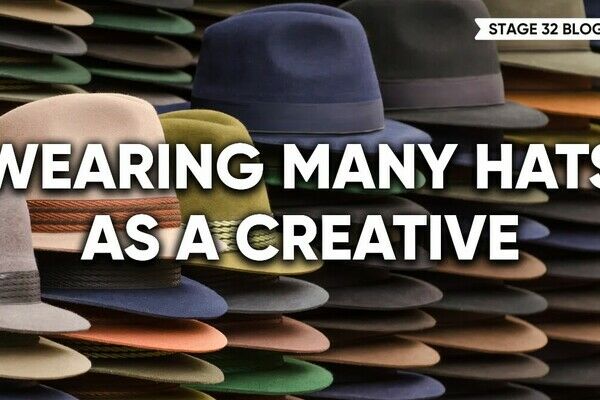
Wearing Many Hats As A Creative

Coffee & Content: Why Your Next Step Matters More Than the Perfect Step

November Write Club Week #3: How To Make A Strong First Impression When Meeting Execs, Producers, & Reps

Making Our First No-Budget Feature: The Pure Vortex Production Chaos (Part 2)

Stage 32 Featured at the 43rd Torino Film Festival!

Green Lights and Grey Areas: Expanding Creative Collaboration in Publishing
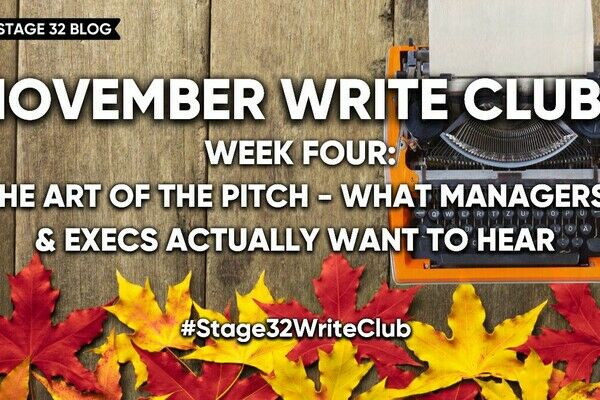
November Write Club Week 4: The Art of the Pitch- What Managers & Execs Actually Want to Hear
